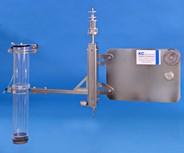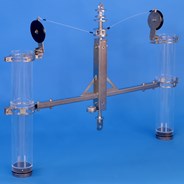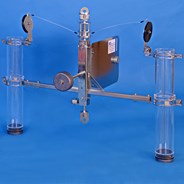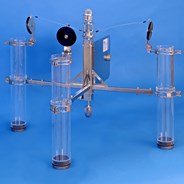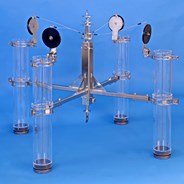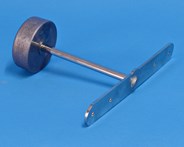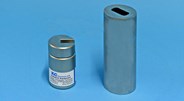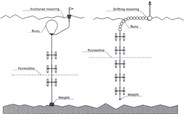Sediment Trap Station Ø80 mm with lid
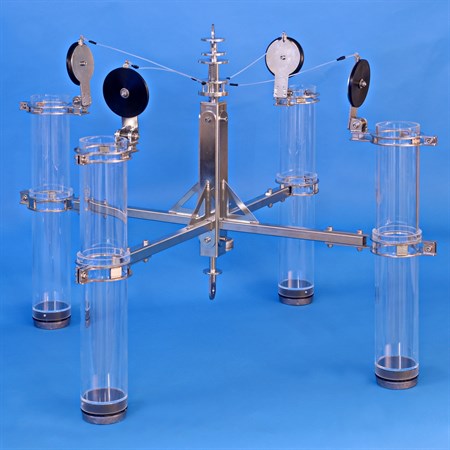
28.xxx series - Sediment Trap with lids - 80 mm
tubes:
- Application:
Sediment traps are small containers placed in the water to collect particles falling toward the sea floor. The traps collect tiny sediment or larger accumulations called marine snow - made up of organic matter, dead sea creatures, tiny shells, dust and minerals.
- General:
- The construction of the sediment trap array ensures a permantly
vertical position of the sampling tubes during deployment. The
steering fin (optional) and the pivot joints force the
array to be held at right angle to the current. Once the sampling
period is done, a drop messenger (60.004 A - sold separately)
causes the lids to close to avoid any contamination when retrieving
the sampler through the water column.
- Options:
- The system is fully configurable. All parts are detachable and the main rack can be attached with 1, 2, 3 or 4 tubes to suit your needs for analysis. The sediment trap consists of detachable cylindrical sampling tubes mounted with lead weights at the bottom. The gimballed tube holders and fin are made of AISI 316 stainless steel. The tubes are made of partially transparent PVC and have an aspect ratio above 6.
Available models with Ø80 mm tubes with
lids:
28.210: 1 tube, 1 steering fin.
28.211: 2 tubes.
28.212: 2 tubes, 1 steering fin, 1 balance arm.
28.213: 3 tubes, 1 steering fin.
28.215: 4 tubes.
Sample volume:
1,9 L for each tube.
Click here for a model without lids: Sediment trap station Ø80/72 mm.
On request, we can provide other sizes of tubes.
The sediment trap has been developed in cooperation with associate professor Michael Olesen, from the Marine Biological Laboratory, University of Copenhagen, Denmark.
28.323 - Main rack:
The main rack for the 28.xxx series sediment sampler, is made from
AISI 316 stainless steel; the rack is delivered with 1 pc 28.102
zinc anode Ø30 x 15 mm 0,55 kg total.
28.221 - Sample tube:
The sample tube 28.101 is used for the KC sediment trap series
28.xxx Ø80 only, the tube is Ø80/Ø76 mm, length 700 mm with a lead
weight in the bottom 2,1 kg total.
28.224 - Arm for sediment station:
The 28.104 arm for the sediment trap station is made from AISI 316
stainless steel, and the arm is connected to the main rack.
28.227- Balance arm:
Balance arm for the Ø80 mm sediment trap series: This arm can only
be used for the 28.212 model. The arm is made from AISI 316
stainless steel, with a lead weight at the end for creating
balance.
60.004 A - Drop messenger, (sold separately):
Before retrieving the trap slide down the drop messenger
and all lids will close immediately.
Accessories:
The picture to the right shows the various type of minor
accessories that can be bought for spare parts for the sediment
system, 28.306 holder for the arm system is made of polymaid PA
6.6, 28.102 Zinc anode, used for protection against corrosion of
the system when deployed in salt water, 28.108 American wing nut,
used for fastening the sediment tube to the arm, 28.109 Umbraco
screw M6 x 12, 5 pcs AISI 316 stainless steel, used for mounting
the arms and fins to the main rack.
Deployment methods:
Seen to the right is the 2 most common options of deployment for
the sediment trap station system, the schematics are for your
general information. KC Denmark A/S cannot estimate any details for
buoys, anchors etc., as local conditions, current and depth range,
etc., are to be considered and tested in practice.



 Benthic chamber
Benthic chamber